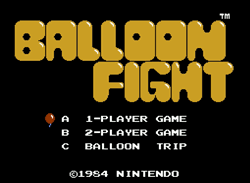 Epiphany of the day: our heroes are defined by their limitations.
Epiphany of the day: our heroes are defined by their limitations.
Balloon Fight seems to be the number one game that Nintendo desperately wants to be a thing, but has never achieved more than a footnote. Ballon Fight was an arcade game that quickly migrated to the Nintendo Entertainment System. Then it got a few ports, a Game & Watch version, and an eventual sequel in Balloon Kid for the Gameboy (notably one of the few games that emphasized the “boy” aspect of the system’s naming). Ten years later, the Gameboy Color saw the “real” Balloon Fight, and it was nothing but random ports and “experiments” from there. WarioWare: Smooth Moves had a mini 3-D Balloon Trip, and Tingle had his own Balloon Fight on the Nintendo DS (which was maybe harkening back to a Hello Kitty version of Balloon Kid). Balloon Fight has appeared on every Nintendo virtual console service going back to the Wii, and was the first NES game released on the WiiU. And through it all, Smash Bros. has been making random references to Balloon Fight as early as Melee, and the little dude in a helmet has cameoed everywhere from Animal Crossing to Mario Maker. Somebody at Nintendo likes Ballon Fight.
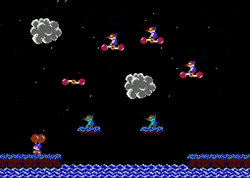 But you actually play Balloon Fight, and you quickly realize there is not much there. A typical Balloon Fight generates a one screen “board” of seemingly random platforms and bumpers. Upon this board one or two players are placed with a smattering of angry penguins. The penguins quickly inflate their balloons, and then the fight is on (assuming you did not murder all the penguins while they were puffing up). Your job is to pop the penguins, and this is a task that can only be accomplished if you properly ram their balloon hitboxes from (roughly) the top. Meanwhile, you are outnumbered and more vulnerable, so your two balloons will quickly explode if you do not exercise caution. Throw in a bonus stage where you collect balloons from pipes every three or four stages, and that is the entirety of Balloon Fight. Float around, pop some balloons, and try not to die. Nothing much to it.
But you actually play Balloon Fight, and you quickly realize there is not much there. A typical Balloon Fight generates a one screen “board” of seemingly random platforms and bumpers. Upon this board one or two players are placed with a smattering of angry penguins. The penguins quickly inflate their balloons, and then the fight is on (assuming you did not murder all the penguins while they were puffing up). Your job is to pop the penguins, and this is a task that can only be accomplished if you properly ram their balloon hitboxes from (roughly) the top. Meanwhile, you are outnumbered and more vulnerable, so your two balloons will quickly explode if you do not exercise caution. Throw in a bonus stage where you collect balloons from pipes every three or four stages, and that is the entirety of Balloon Fight. Float around, pop some balloons, and try not to die. Nothing much to it.
And, as has been pointed out by many a gaming historian, this 1984 game is pretty much just 1982’s Joust.
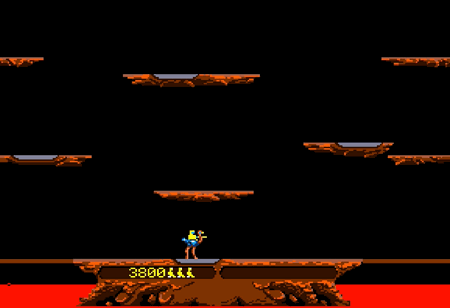
If you need a description of Joust gameplay, read that previous paragraph about balloon fighting. Give or take the jousters immediately spawning without that balloon pumping phase, Joust is pretty much exactly Balloon Fight. In fact, many would argue that the arcade-based original version of Joust has a leg up on Balloon Fight, as later stages of Joust get downright chaotic with multiple, fast opponent spawns that would not be possible on NES hardware (or at least would slow things down to “room full of darknuts” levels). And Joust has one more significant advantage over Balloon Fight: it is based on a real activity. Like Pong before it, Joust is founded on the real, centuries-old sport of jousting. Mount up on your steed, and knock your opponent down and into the void.
Except… Well… I hate to tell this to anyone that might be imagining a medieval epoch that was a lot more interesting… But… Jousters don’t usually ride ostriches, and ostriches cannot fly.
Sorry. I apologize if that ruined anyone’s day.
So what is the deal with Joust? What is the deal with Balloon Fight? Jousting, whether it involves actual mounts or some inflated latex, has existed for centuries in the real world without having to involve flight. And any nerd that has ever stuck around a Renaissance Festival will tell you that jousting is exciting all on its own. What was the point in adding flapping? The likes of Arch Rivals or Mutant League Football attempted to improve on their base sports of Basketball and Football with fantastic (as in “fantasy”, not as in “great”) additions to the base games, and they were curiosities (at best) against the ever-growing pile of NBA 2Kers and Maddens. Why did game designers have to make these sports more airborne? And why were they successful?
The answer lands with the familiar thud of a penguin falling into the mouth of a giant fish: because 2-D is stupid.
Assuming you are not a games journalist of 1999, you likely love 2-D videogames. Mario started in 2-D. Sonic started in 2-D. Lester the Unlikely started in 2-D. It is reasonable to state that 2-D games hold a special place in the hearts of many a gamer, and this is proven by the fact that a new 2-D indie Metroidvania is released roughly every seven seconds. But, while the concept of a 2-D perspective lends itself to something like Donkey Kong, already by (not even Super) Mario Bros., Mario could scale marvelous heights with a single bound.
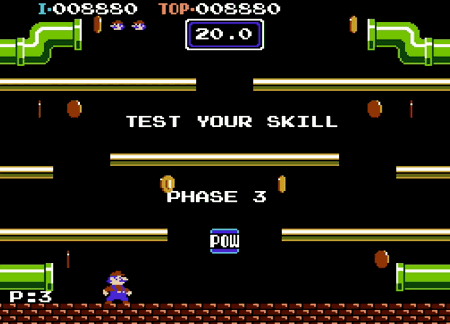
Similarly, look at iconic 2-D action titles like Mega Man or Contra, and they jump (hey!) almost immediately to vertical areas that require excessive agility or ladders.
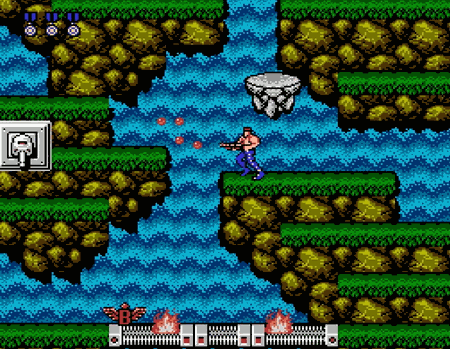
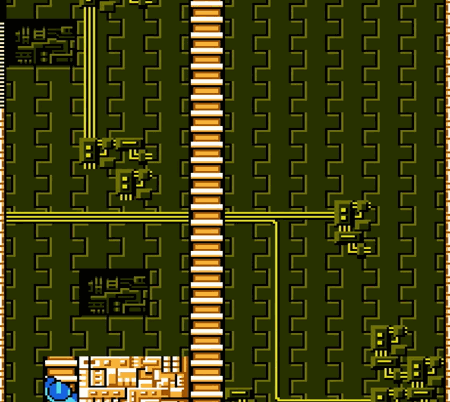
And when you take 2-D characters into 3-D, they very often lose their mad ups. Samus Aran entered a 3-D first person perspective concurrently with a 2-D adventure, and you can feel a bit of a different weight between the two simultaneous Samuses.
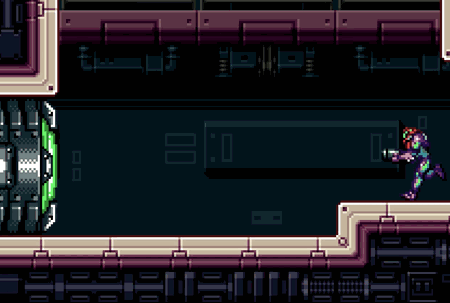
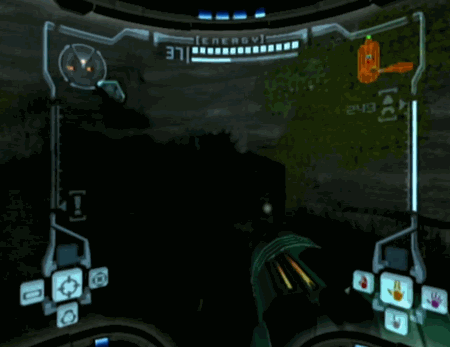
And this is not just a matter of twenty years of genre mutation! There are two very different Links in 8-bit land.
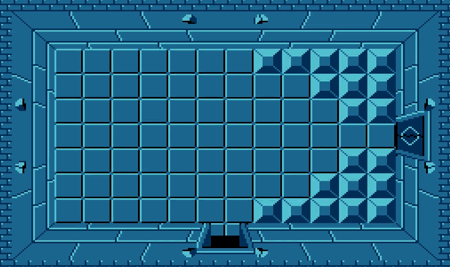
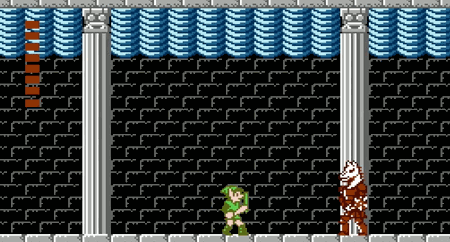
Only one of them has the ability to move “up”, and the other mysteriously gains not only a jump that can vault over villagers, but the ability to cast a spell to transform into a flyer that has the maneuverability of a Balloon Fighter.
And these characters are known for their acrobatic expertise. Sonic’s rolling jump is a part of him as much as speed, and his sidekick/rivals have additional moves to encourage upward movement. Samus can barely go through an adventure without the Screw Attack turning her into a whirling dynamo, and it is a rarity to see Mega Man without his trusted dog-jet. Mario is Jump Man. And none of that would have been necessary if they were born into a 3-D world like Doom Guy or Master Chief. These popular protagonists are who they are because their designers wanted them to move in more directions in 2-D space.
A 2-D Joust without jumping/flying would be two dumbasses smacking into each other.
A 2-D joust-alike without balloons would be some weirdo in a helmet rolling around like a doof.
All Balloon Fighters, like so many other heroes of their era, are defined by their limited world. Without their restrictions, they are nothing. With their constraints, they are distinguished.
SBC #33 Balloon Fight (stage) & Balloon Fight
Balloon Fight (stage) in Super Smash Bros. Ultimate
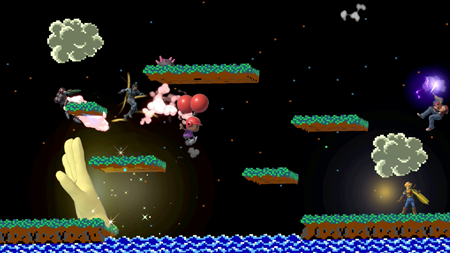
- The background work? It is always fun to have a stage that has a little variety every time it gets selected. You really need that in a game that already has approximately ten million stage choices. We have some stalactites that are breakable, a wraparound arena, and a backdrop that may as well be a deactivated monitor. But we’ve got that fish! And that damned thing kills me every time! Wiggle for your life, Pit!
- Smash Trivia: A Balloon Fighter playable character was considered for Super Smash Bros. Melee, but that slot eventually went to the Ice Climbers. I can understand why this happened, as the basic setup of any given Ballon Fight stage is weirdly similar to the 2-D arenas of Smash Bros. There is a lot of shared DNA here.
- Does Smash Bros Remember Today’s Game? The Balloon Fighter only gets random references from Animal Crossers and alike, but the flippers and some Balloon Fight music has been skulking around the series since Melee. And that fish! He invaded the Ice Climbers stage as of Brawl, and hasn’t left since. Smash Bros. likes Balloon Fight.
Balloon Fight (just the game)
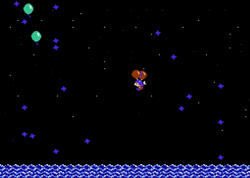 System: This one got ported all over the place in its time: start at the arcade, move to the Nintendo Entertainment System, and then we’ve got the NEC PC-8801, Sharp X1, and MZ-1500. It also apparently made it to the Sharp Zaurus a couple of years before the Gameboy Advance. Weird! Anyway, now it just appears on every Nintendo emulation service known to man.
System: This one got ported all over the place in its time: start at the arcade, move to the Nintendo Entertainment System, and then we’ve got the NEC PC-8801, Sharp X1, and MZ-1500. It also apparently made it to the Sharp Zaurus a couple of years before the Gameboy Advance. Weird! Anyway, now it just appears on every Nintendo emulation service known to man.- Number of players: Two. And that is probably the reason anyone ever plays it. Two player simultaneous fun! In 1984!
- How about Balloon Trip: Balloon Trip is the “endless mode” that is the other most prominent memory of everyone that ever played Balloon Fight. Personally, I have never much seen the appeal, as I like a little more structure to my endless levels, and the seemingly random configurations of things trying to kill me are not as interesting as steering around homicidal penguins. But variations on Balloon Trip are all the rage, so what do I know? Flappy Balloon Fighter forever.
- Not a Bonus: Bonus stages are the usual early-NES era challenges where you are expected to “perfect” a collection of random baubles within a time limit. Like in Mario Bros., the trick is to properly utilize the wraparound screen to shave precious seconds off floating back and forth. You really see the physics details of balloon tripping here, and thus it feels a little bit more fair. What I am saying is that this is definitely one place where Balloon Fight beats out Ice Climbers.
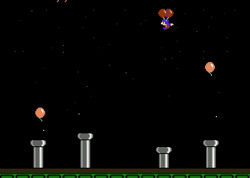 By Zeus: I understand it is a typical videogame “thing”, but why do the thunder clouds only hate Balloon Fighter? Did the penguins make a pact with the horrible god of Balloon World?
By Zeus: I understand it is a typical videogame “thing”, but why do the thunder clouds only hate Balloon Fighter? Did the penguins make a pact with the horrible god of Balloon World?- Schadenfreude: I enjoy watching the Balloon Fighter die. His helpless little flaps are adorable as he plunges to death in the maw of a fish. It is worth inserting another quarter to see it again.
- Did you know? Speaking of Joust, Satoru Iwata ported that Midway hit to the NES. I wonder if that influenced any Balloon Fighting at all…
- Would I play again: No thank you. I understand some folks jump on Balloon Fight every time it appears, but I am not one of those people. It is fun for thirty seconds, and then I move on to literally anything else. Sorry, Balloon Buddy!
What’s next? On Fridays, we wear pink. And you know we can take a look at a princess that really knows her pink. Please look forward to it!
IMO the rival opponents are more like tengus than penguins. I’ve seen the official art and these are guys have got masks with pointy noses.
But anyway, while the whole “take opponents with similar physics-based flight” thing is certainly a parallel to Joust, I’d argue that Mario Bros. (1983) is even more like Joust with its level design of “the same dang screen every time but with different variables”. I mean, Balloon Fight at least had the actual level layouts change.
Oh and on the subject of Balloon Fight cameos, WarioWare D.I.Y. Showcase (RIP WiiWare) had a mode that turns music into Balloon Trip-esque stages where you try to hit the musical notes in flight. It’s really neat and it’s a dang shame that Nintendo and Intelligent Systems have never released another WarioWare D.I.Y. installment.
WHERE HAVE YOU BEEN!?
I’ve still been around weekly, just haven’t had much to say is all.
ALLOWED
(glad to see you all the same)